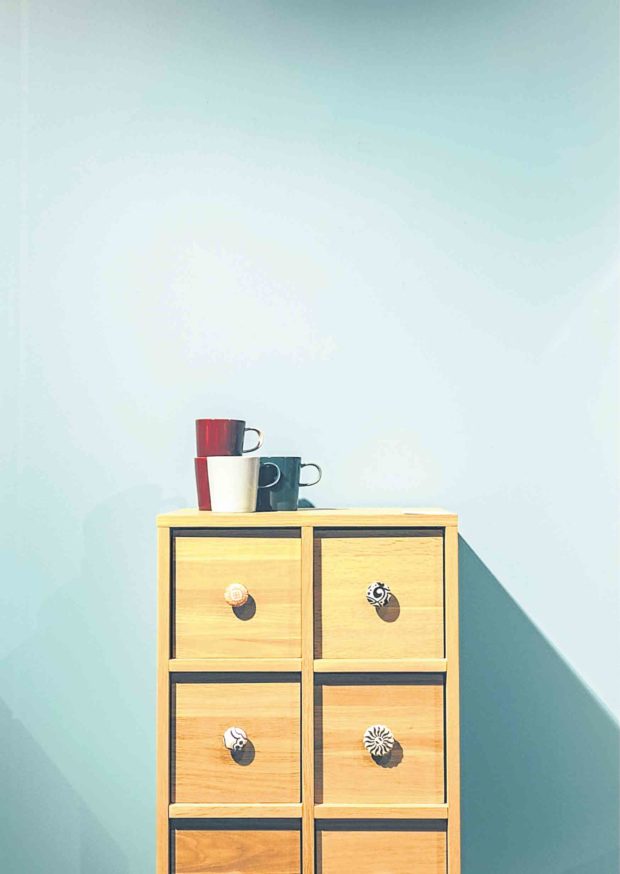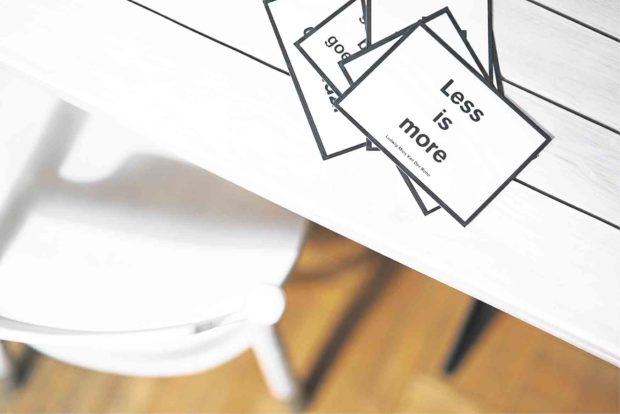Filipino guide to minimal living
Consider this scenario: if you were to live on a deserted island for the rest of your life, can you choose just five things that you would bring with you? Can you figure it out in a few seconds, or do you have a hard time narrowing the essentials down?
If you chose the latter, you aren’t alone.
For many urban dwellers, it is difficult nowadays to determine which items are actually essential. As we have become dependent on technology and media, we are often misled by advertisements into buying things which we don’t really need.
Many of us are now swamped with too much stuff. This is why sometimes we feel that we need a vacation, even from our own homes. The clutter that we encounter everyday has become a source of stress.
In response to this problem, more people nowadays seek to live life simply.
They seek to live with as little material possessions as possible. Though yet to become widespread in the Philippines, this way of living has given the minimalist movement a new definition.
Minimalism is no longer restricted to Zen architecture and Japanese design. No longer just a trend in aesthetics, minimalism has now evolved into a lifestyle.
For the new age of minimalists, it’s not about how your home looks like or what it lacks. Rather, it’s about limiting yourself to bare essentials so you can focus on the more important things in life.
Joshua Becker, author of the book “The More of Less,” prescribes some simple steps to adopt a minimal lifestyle.
Read and recycle
Does mom love catching up on the latest showbiz magazines? Does dad have a habit of reading the newspaper every morning?
While many of us love to reread books and articles, it might be wise to read these materials thoroughly and dispose of them afterward.
Becker suggests cutting out articles that truly catch our interests, such as recipes and coupons, but recycle the rest. You can even earn from the stacks of paper or dog-eared books by selling them to recycling centers or second-hand shops.
These items would serve you better by being recycled compared to just being stacked up in your room.
Adopt uniformity
Take a look at your china cabinets. Do they boast of colorful containers of different sizes and materials?
In as much as many of us hold our tableware dear, it might be better to select only a few priceless pieces and let go of the rest. Using matching utensils, cups, plates and bowls will allow you to store them more efficiently and keep track of their quantity.
Declutter
This seems the most obvious way of practicing minimalism, but you’ll be surprised how it can easily de-stress you. Keep counters and tabletops clear of objects.
Donate clothes in your closet, especially those that you don’t really wear regularly. Leave some closet space. Use a filing system on your work tables. Maximize the use of drawers to hide your necessities but don’t overstuff them.
The idea of “less is more” will help you work more productively.
Invest in quality items
Contrary to popular belief, minimalism isn’t about being frugal. While the practice will allow you to save tons because you wouldn’t buy as much as before, it pays to invest in quality items.
While the branded shirt or the authentic furniture might seem to cost you an arm and a leg, they will provide you savings in the long run. If you can be sure that these items will last for a long time, it’s a good buy.
Reduce decorations
Do you still have those Christmas lights hanging around your fence in June? Do you really need to display all the family photos on the coffee table or would a photo album be better?
Becker suggests even reducing your home décor by half. Try removing items on display at your home and see if you can live without them.
While the antique religious image may seem essential to you, perhaps you can do without the toy car collection display over the cabinets. You can always put them back if you wish.
Over all, practicing minimalism is not about prescribing to a set of rules. It’s not about having Japanese-made décor or having indoor plants.
The best way to practice minimalism is to reduce your possessions to the bare essentials. Determine which ones are important to you and which ones you can live without.
While it might be difficult to let go of things first, you’ll find yourself having more time and less stress. With fewer stuff in the house, there will be less to clean and maintain. With fewer things to buy, you’ll be spending less. The benefits of living small actually abound.
To quip Ludwig Mies van der Rohe, a famous modernist architect, “Less is more.” By becoming a minimalist, you’ll be able to maximize the simple joys life can offer.
(Sources: Daniel Frese via pexels.com, Lisa Fotios via pexels.com; www.becomingminimalist.com; www.theminimalists.com; www.opinionator.blogs.nytimes.com)
The author is a licensed architect who studied abroad and currently works for DSFN Architects. A self-admitted hoarder, she finds it difficult to donate clothes or throw away old papers. Her time abroad, however, forced her to live out of a suitcase for many months, during which she learned to appreciate minimalism.

